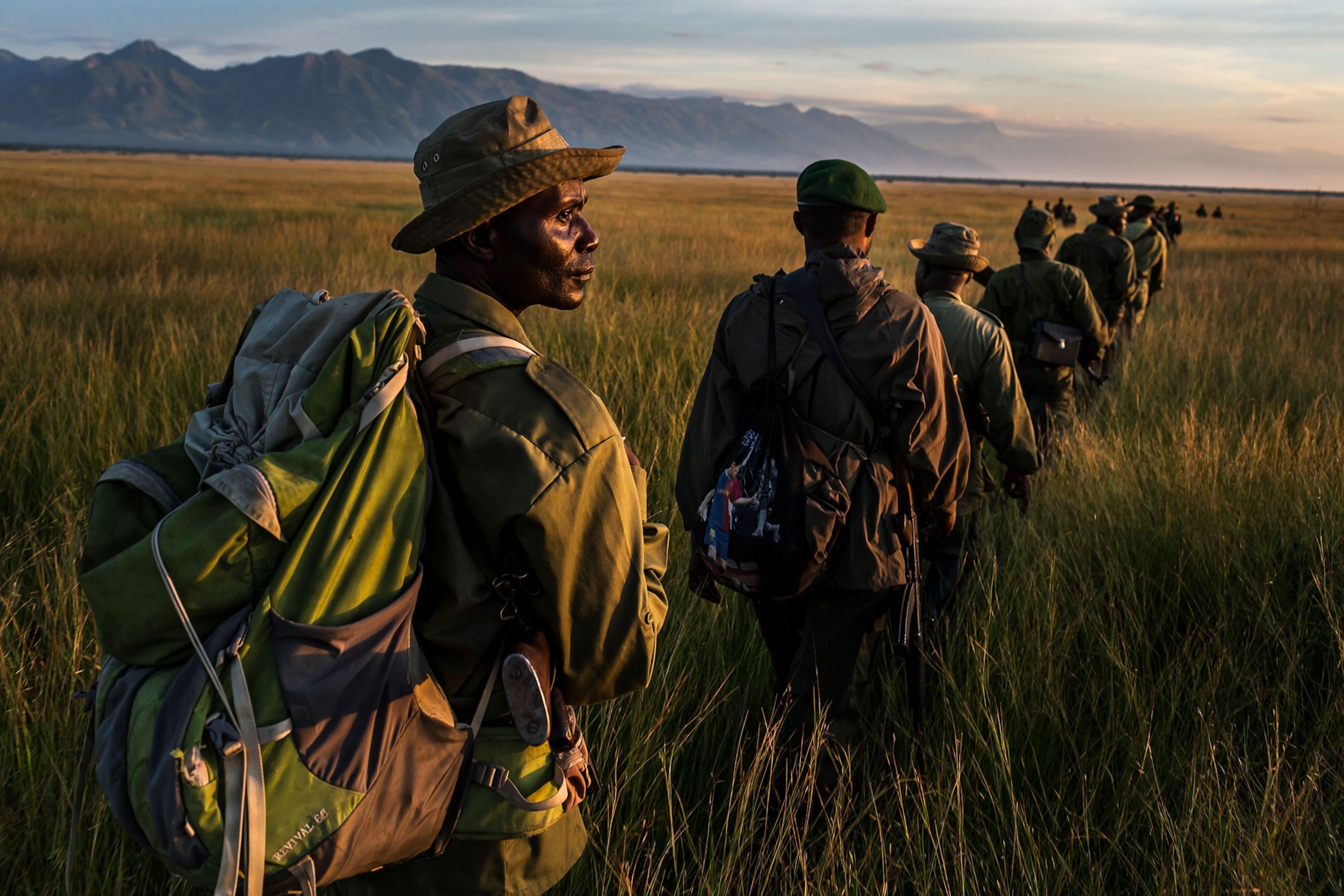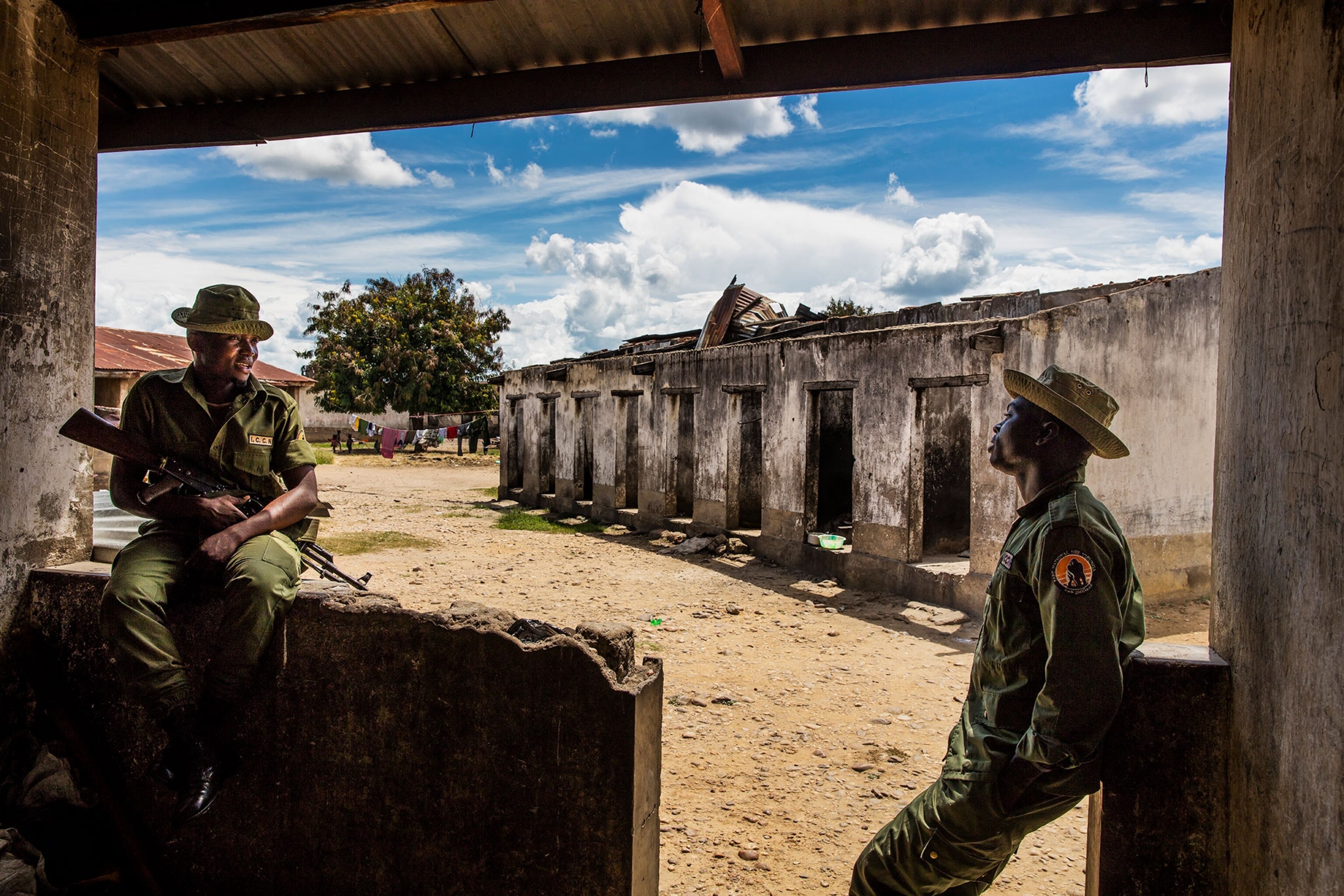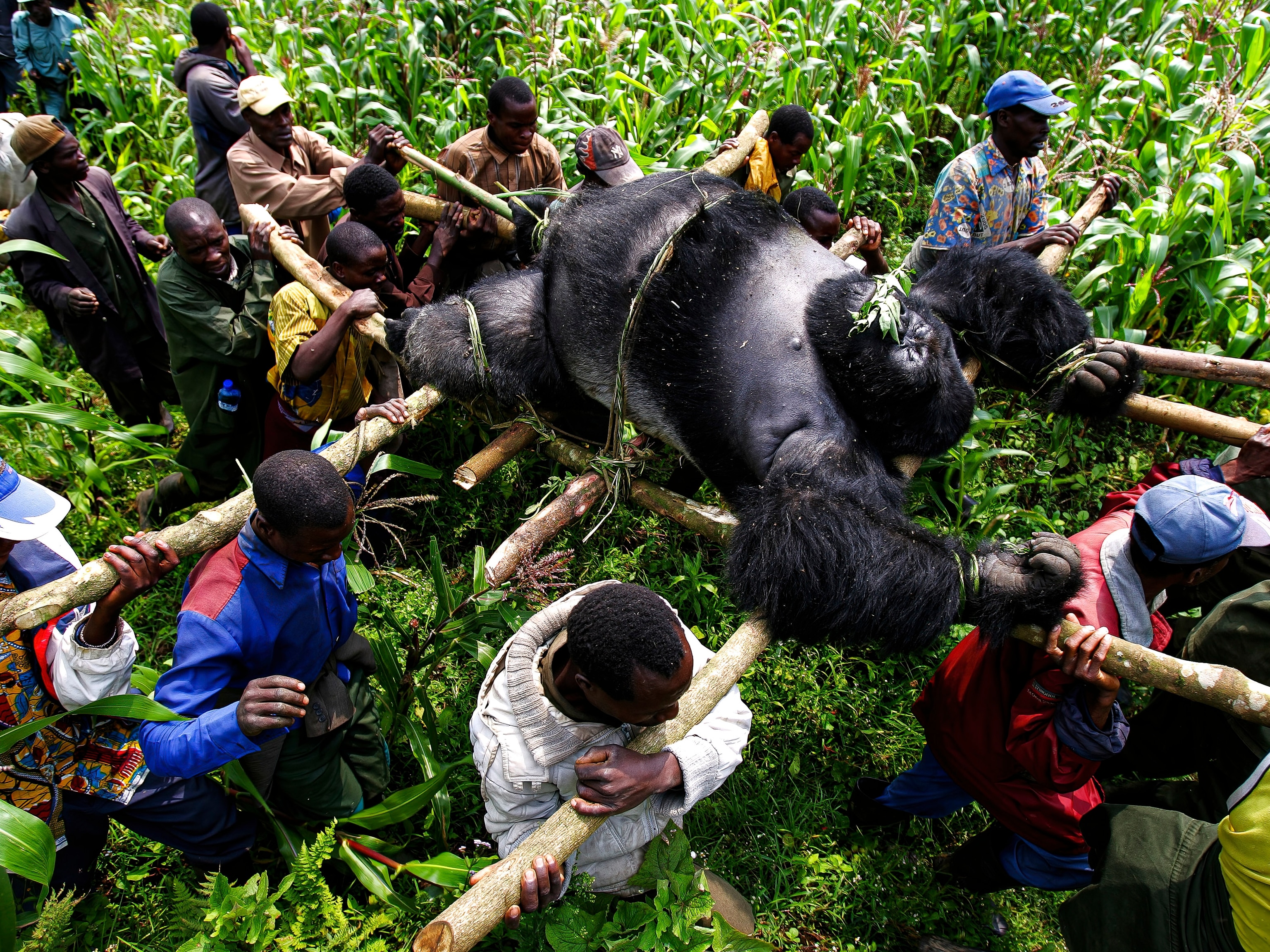Another Ranger Killed Protecting World's Most Dangerous Park
The latest casualties at Virunga National Park highlight the danger rangers face every day.
One ranger has been killed and another seriously injured in Virunga National Park, in the Democratic Republic of the Congo, this week by members of a militia, according a park statement.
This attack underscores the dangers that those on the front lines of conservation, in Virunga and across Africa, face every day.
Virunga is one of the world’s oldest and most dangerous parks. More than 150 rangers have been killed there during the past decade in attacks by the FDLR, the Rwandan Hutu rebel group, and mai-mai, a term that refers to a range of different community-based militia groups established during Congo’s two wars.
The death of Patrick Prince Muhayirwa, 26, and wounding of Jean Claude Muhindo Mastaki is yet another hit in the battle for Virunga. The rangers were part of an anti-poaching patrol, the Guardian reported, and they were ambushed on the shores of Lake Edward, near the Ugandan border.
“Ranger Muhayirwa was a young and highly dedicated ranger, and the park is in deep mourning for his loss,” park director Emmanuel de Merode said in the statement.
The World Heritage site is home to unparalleled biodiversity, including its famed mountain gorillas, but decades of mismanagement and conflict have cast a deadly shadow over the 300 rangers who patrol and protect the park and its wildlife.
For years park rangers have put their lives on the line for little in return. Their salaries, when paid, barely covered basic necessities. But when de Merode took over as park director in 2008, things began to change.
“The conditions before were very, very bad,” Augustin Rwimo, a 28-year ranger, told National Geographic’s Jon Rosen. “But now we eat three meals a day. And everyone who is working is able to send his children to school. Most of our rangers have even built their own houses.”
Still, the job remains exceedingly dangerous. In addition to confronting government rebels, Virunga’s rangers must defend the area from illegal charcoal harvesters, poachers, and unlicensed fishermen. Encroachment by villagers’ farming plots presents another challenge.
Details of this attack in Virunga are scarce. We’ll update the story if we learn more.
Rangers in Need
Outside of Virunga, many rangers in Africa’s parks and reserves don’t receive the support and supplies they need.
A survey by the World Wildlife Fund this year found that of 82 percent of the 570 rangers surveyed said they’ve faced life-threatening situations on duty, but only 40 percent said they have the proper equipment to do their jobs, like boots and GPSs. Just over half say they’ve gotten adequate training.
“Donors outside of Africa want to see sexy, high-tech solutions like drones and ground sensors, not to hear about the need for warm clothing, boots, and better food for rangers,” Peter Newland, the training director at a private security company in Africa, told the New York Times in November. “Large nongovernmental groups [NGOs] spend huge amounts, yet there are rangers calling me for socks.”
Rangers often operate in war zone-type conditions, making the lack of basic supplies and training all the more problematic. Poachers in particular have become more brazen and more sophisticated, sometimes using military-grade weapons and shooting directly at ranger patrols.
During the past decade more than a thousand rangers died in the line of duty, the Guardian reported. More than two-thirds of those were likely killed by poachers. The Thin Green Line Foundation, an NGO that supports park rangers around the world, shows that the most ranger deaths have occurred in East Africa and Asia. (Read more: "For Rangers on the Front Lines of Anti-Poaching Wars, Daily Trauma")
Because of the danger and low pay, according to the WWF survey, more than half of rangers wouldn’t want their children to follow in their footsteps.
Virunga is requesting donations to the Fallen Rangers Fund, which helps the widows and children of rangers killed protecting the park.









